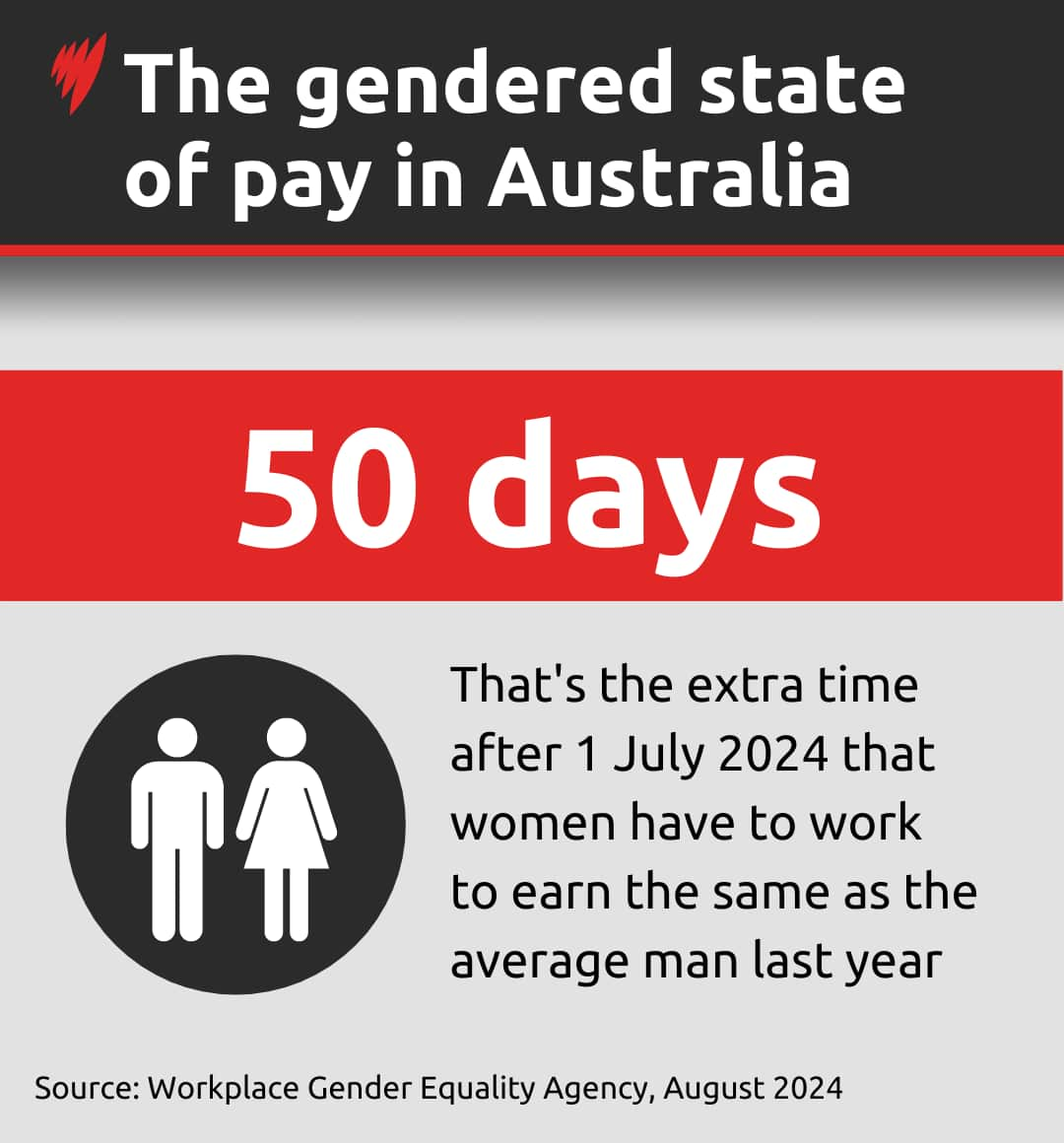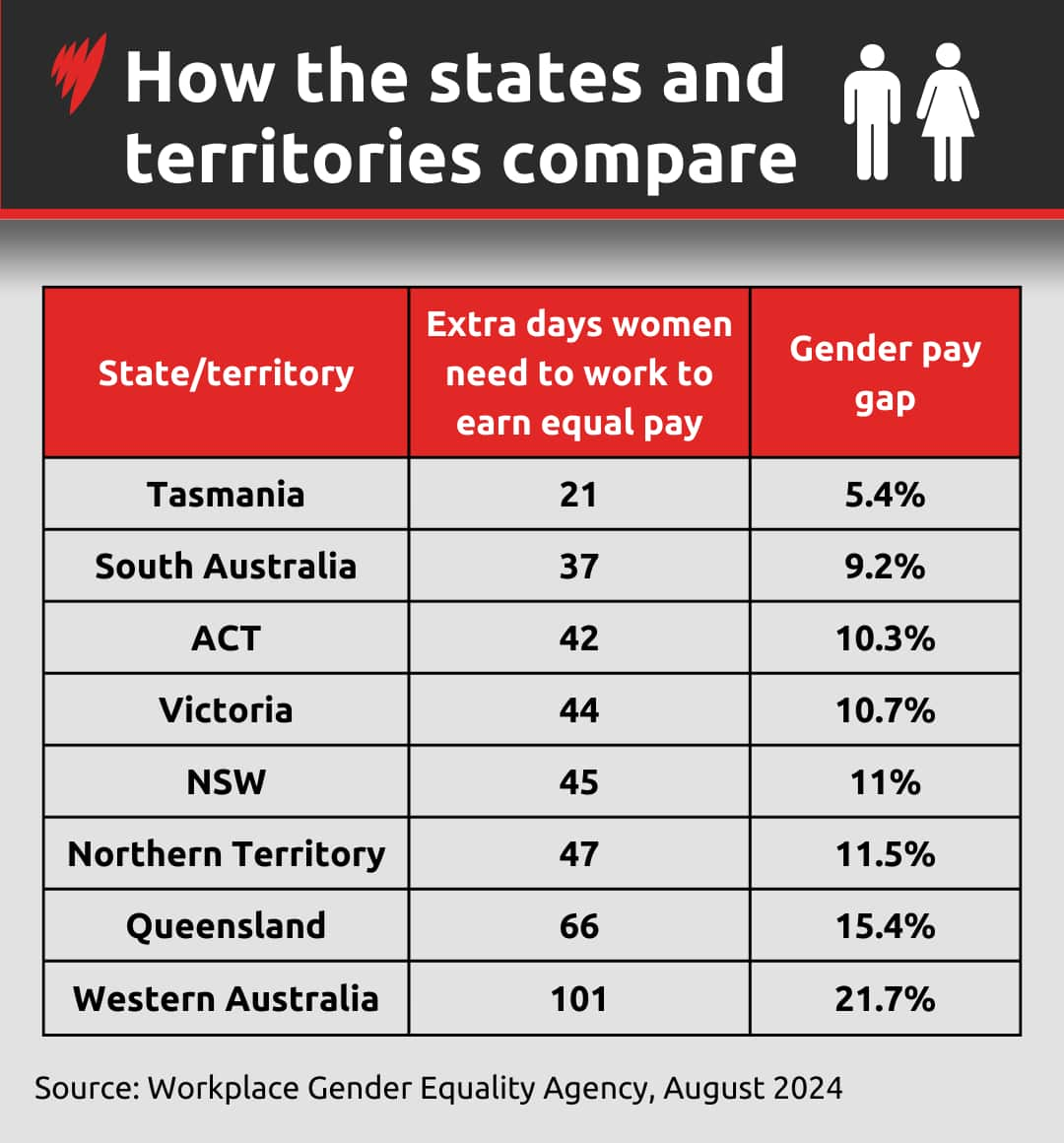An Australian woman has to work more than 50 days in the next financial year to earn the same as the average man did last financial year.
That’s according to new analysis from the Workplace Gender Equality Agency (WGEA) using data from the statistics bureau.
It’s a slight improvement on last year, when the national figure was 56 days.
“Every time it comes down, it’s positive, but 50 days is still a lot of days,” WGEA CEO Mary Wooldridge said.
“That’s a lot of extra work that women are doing just to earn the same, on average, that men earned in the previous year.”
WGEA used the Australian Bureau of Statistics’ average weekly earnings data from February to calculate the figure.
For men working full-time, their reported average weekly earnings was $1,982.80. For women, it was $1,744.80 — equating to a difference of around $238 every week and $12,376 for the year.
That doesn’t include bonuses, superannuation or overtime, which WGEA noted typically favours men.
Pay gap ‘grows and grows’
Wooldridge said the implications of the gender pay gap were lifelong.
“When we talk about retirement savings and superannuation — and the fact that there’s a large growing cohort of older women who are becoming homeless or have very limited savings — it is that accumulation, year-on-year, of the differentials in terms of what they’ve been able to earn, because largely our superannuation is based on our earnings of that year,” she said.
“It starts small and it grows, and it really grows the most when women are taking time out of the workforce for family and caring responsibilities in their 30s and early 40s.
“The gaps aren’t made up again when women are returning to the workforce.”
Where do Australian women fare better?
Tasmania is the state nearest to closing the gender pay gap, with women needing to work 21 extra days post-1 July to earn the same as the average man did last financial year.
Western Australia is the furthest away, with women having to work 101 additional days.
Wooldridge said that’s largely due to the different types of employers that dominate each jurisdiction.
“WA’s two biggest industries are mining, which is a highly-paid, masculinised industry, and their other big industry is healthcare and social assistance, which is a highly feminised but much lower-paid industry,” she said.
“The combination of those two means that when we look across the workforce about what men and women are earning, on average, the differential is the highest.”
How can women address pay gap concerns?
If you know or suspect a male colleague in the same role as you is being paid more, Wooldridge suggests first broaching the subject with your employer.
“Equal pay for equal work is the law, so they actually can raise it with their boss and raise it with HR,” she said.
If it’s not able to be resolved internally, you can take your concerns to the Fair Work Ombudsman.
Wooldridge noted eliminating unequal pay was just one part of the equation, though.
“We still have men much more likely to be in the higher-earning roles and industries and women in lower-paying roles and lower-paying industries across the board, so we need to look beyond pay to also composition [of industries] to make sure that we can close the gender pay gap,” she said.
But she added there were signs the tide was slowly turning.
“We are seeing momentum, I think broadly, nationally, in terms of the debate in relation to gender equality,” she said.
“We’re seeing pressure within industries and amongst competitors and companies, in terms of how they perform relative to each other.
“Internally, we’re hearing from employers that there is pressure from their employees and from their prospective employees to ensure women and men are equally valued and rewarded in the workplace.”
Equal Pay Day is marked on 19 August this year


